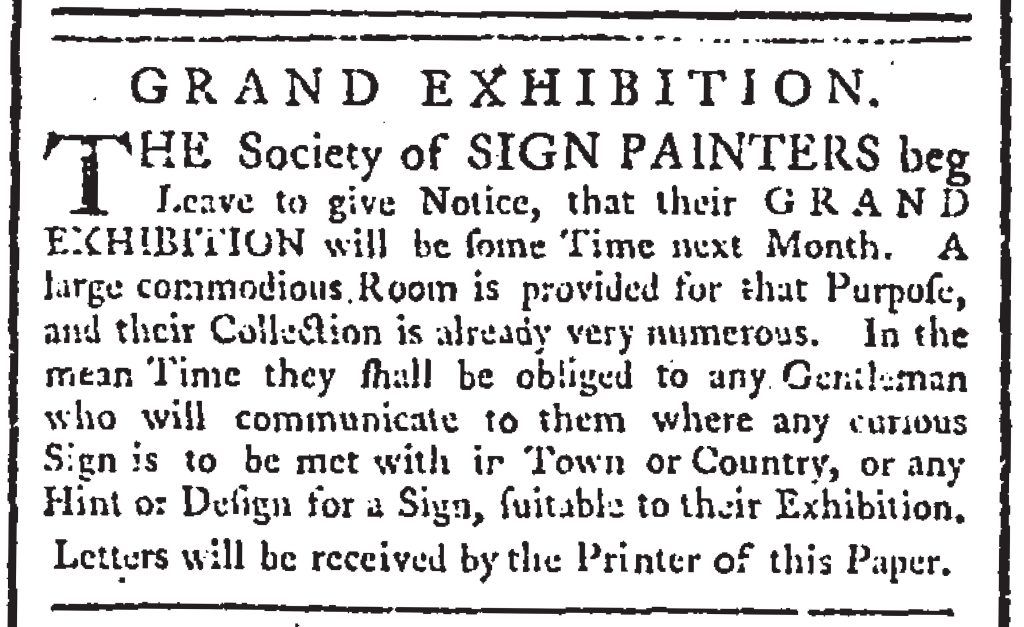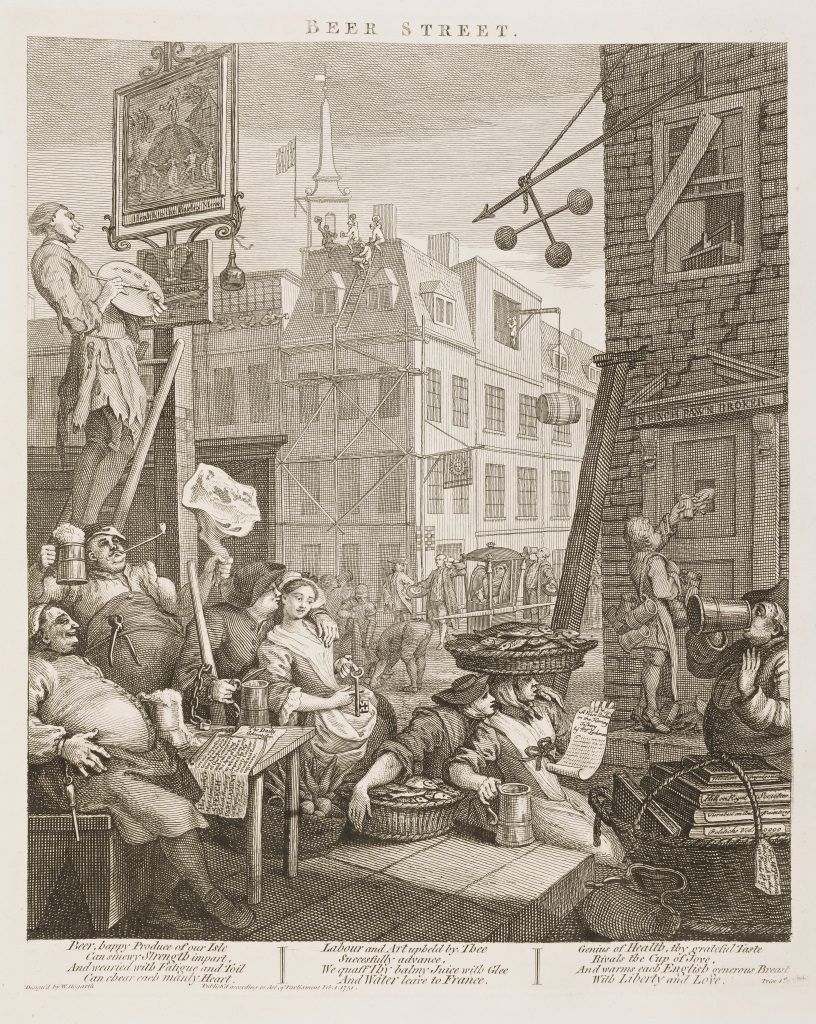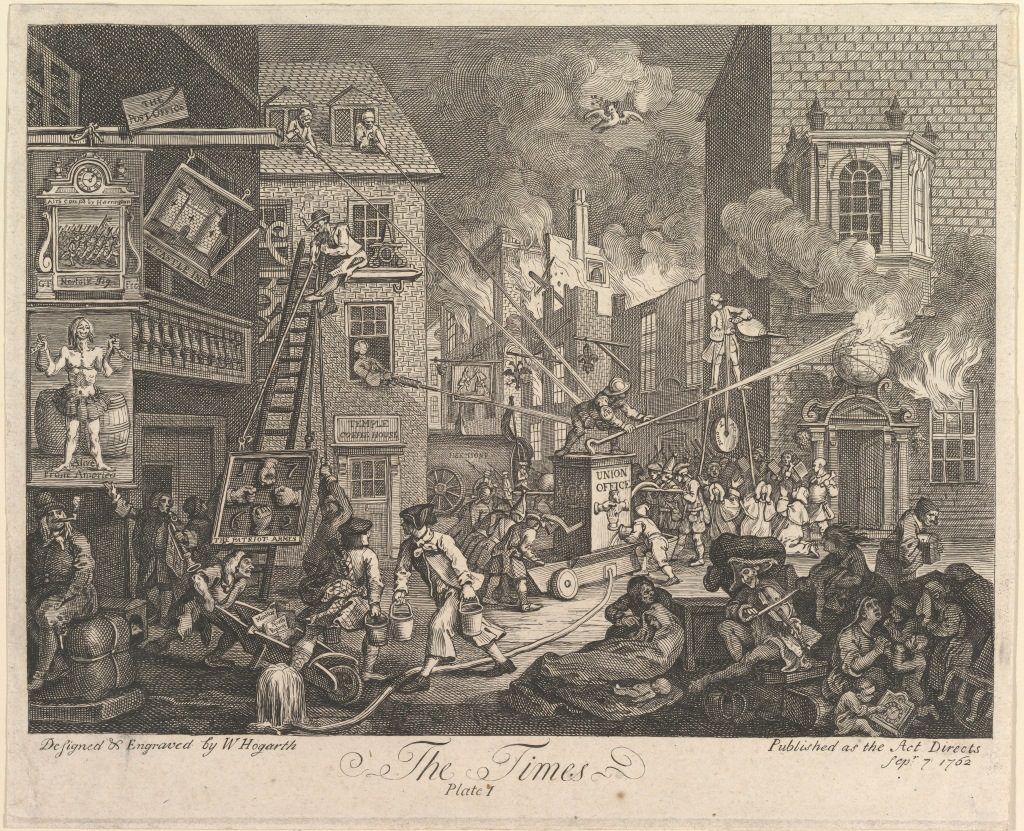The Grand Exhibition of the Society of Sign Painters
Exhibition at London Letterheads, tribute to the 1762 Grand Exhibition of the Society of Sign Painters.

This August we’ll be opening a very special sign painting exhibition within the public-facing part of Letterheads 2018: London Calling. It is being curated by Meredith Kasabian of Best Dressed Signs and the Pre-Vinylite Society, and builds on her research into an 18th Century exhibition that happened a short distance away in Covent Garden. We’ve invited Meredith to share some of her research in this guest post to whet the appetite for the forthcoming contemporary interpretation of this historic event…
The 1762 Grand Exhibition of the Society of Sign Painters: A Burlesque of the Times
By Meredith Kasabian

In the spring of 1762, scores of curious Londoners paid one shilling per admission for the chance to glimpse the new exhibition by London’s fictional Society of Sign Painters. This “Grand Exhibition” (Fig. 1, above) presented the nation with a satirical display of pictorial signboards, some painted specifically for the show (purportedly by William Hogarth, whose streetscape paintings and engravings often featured London’s signs (Figs. 2 and 3, below) and some taken clandestinely from the city streets in the aftermath of a sign ordinance, which required all projecting signs to be removed. The enactment of this city ordinance—along with a desire to mock the concurrent exhibition at the Society of Arts—prompted journalist Bonnell Thornton and his fellow London wits, known as the Nonsense Club, to seek out, take down, and display these pictorial signboards in the world’s first gallery exhibition of hand-painted signs.

